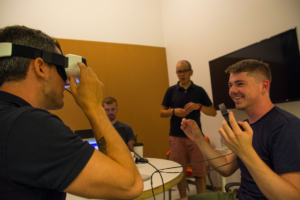 Can new technologies like virtual and augmented reality and 360 video induce empathy in users? That is what Empathetic Media founder Dan Archer is studying in collaboration with Columbia University’s Tow Center for Digital Journalism. A first of its kind project, this research will result in an analysis of empathy and whether users can more closely relate to characters and situations in a VR story versus other mediums. Archer is quantifying whether an audience’s “sense of having a story that you can look around and explore” ties them more strongly to the content and encourages them to take action afterwards.
Can new technologies like virtual and augmented reality and 360 video induce empathy in users? That is what Empathetic Media founder Dan Archer is studying in collaboration with Columbia University’s Tow Center for Digital Journalism. A first of its kind project, this research will result in an analysis of empathy and whether users can more closely relate to characters and situations in a VR story versus other mediums. Archer is quantifying whether an audience’s “sense of having a story that you can look around and explore” ties them more strongly to the content and encourages them to take action afterwards.
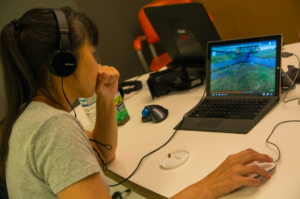 This research started with a focus on 360 video, comparing user responses to pieces on desktops and headsets. Archer is also exploring if having a first person perspective, whether male or female, has any affect on users’ reactions. Thus far, he has concluded pilot testing and is planning on submitting the findings to an institutional review board to roll out a bigger study for around 100 people.The next phase will compare responses to a CGI and a 360 video version of the same story.
This research started with a focus on 360 video, comparing user responses to pieces on desktops and headsets. Archer is also exploring if having a first person perspective, whether male or female, has any affect on users’ reactions. Thus far, he has concluded pilot testing and is planning on submitting the findings to an institutional review board to roll out a bigger study for around 100 people.The next phase will compare responses to a CGI and a 360 video version of the same story.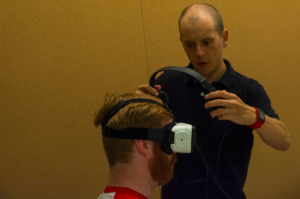
Archer said that this research will tackle the question of whether the hype around VR’s effect on users is warranted, especially given the costs both financial and logistical of producing this content. He faces the challenge of finding a commonality with regards to a baseline empathy level and the fact that different audiences respond to different stories in different ways. For example, if someone is already familiar with a particular topic or issue, a VR story might not encourage them to take action “because they’ve already become so engaged with the story.”
So far, he has found that people viewing the experience on a computer ask more questions about the st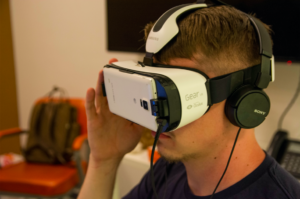 orytelling perspective and the way the narrative is framed than those viewing it on a headset. “I think there is a sense that the immersion (of a headset) puts you somewhere that maybe does cut what might be your critical faculties of looking at it more objectively,” he said.
orytelling perspective and the way the narrative is framed than those viewing it on a headset. “I think there is a sense that the immersion (of a headset) puts you somewhere that maybe does cut what might be your critical faculties of looking at it more objectively,” he said.
His goal is that Empathetic Media can build on this the research to create more engaging stories that support its mission of using new technology to tell non-fiction narratives that lead to social change. Archer closed by saying, “I’m hoping that we’ll be able to use these findings and really isolate where is the best point of investment both in time and finances to generate that sense of engagement.”

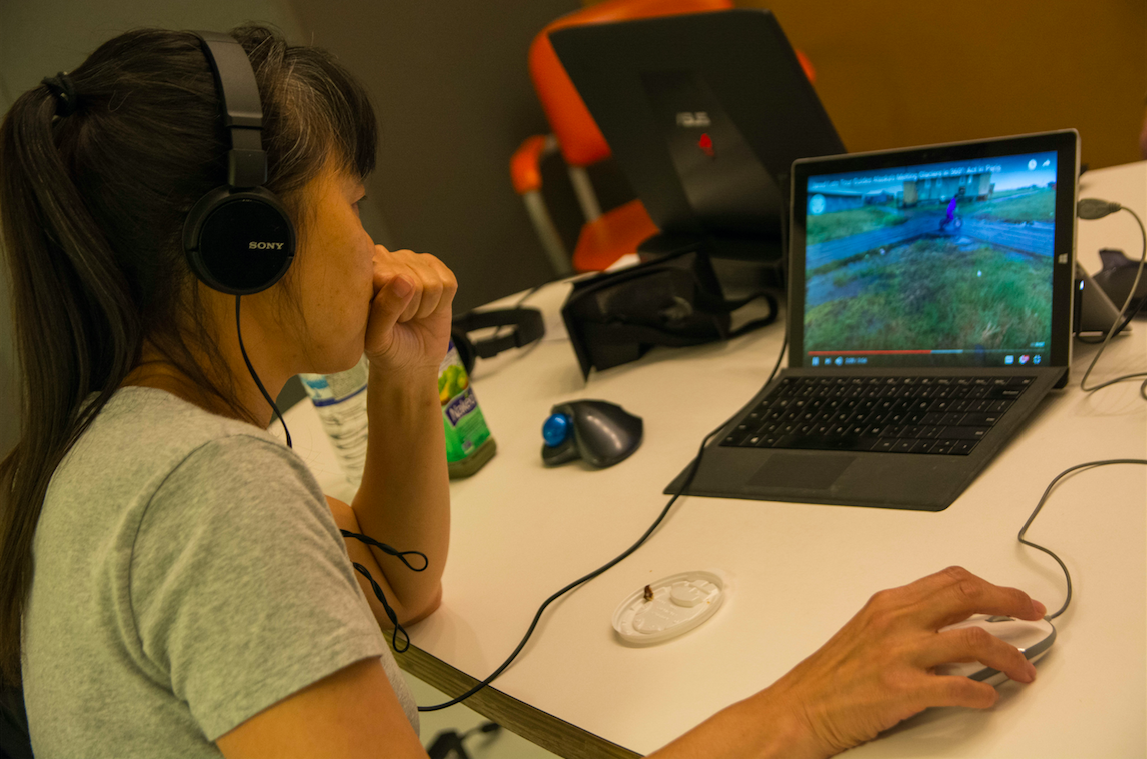
One Comment on “Can VR induce empathy? Behind our work with the Tow Center at Columbia Journalism School”
Hello, I found this article about the work you are doing around empathy and VR very interesting and relevant to what we are trying to do. I am from HEART, a humane education organization whose mission is to foster empathy and compassion in today’s K-12 students. We do so by teaching students, running after school and summer programs, and training teachers to integrate humane ed into their instruction through conferences, workshops and webinars. More recently, we have begun to explore digital initiatives such as creating educational games and VR experiences to see if digital experiences can engage students and induce empathy on the user. We are in early stages with the VR initiative and are very interested in learning more about what Empathetic Media is doing with VR in collaboration with the Tow Center at Columbia.
Would you be interested in setting up a call or exchanging emails to see what collaboration opportunities are possible? We hope to conduct similar studies and we believe we have the content expertise around humane education and empathy but lack the technical experience and capabilities.